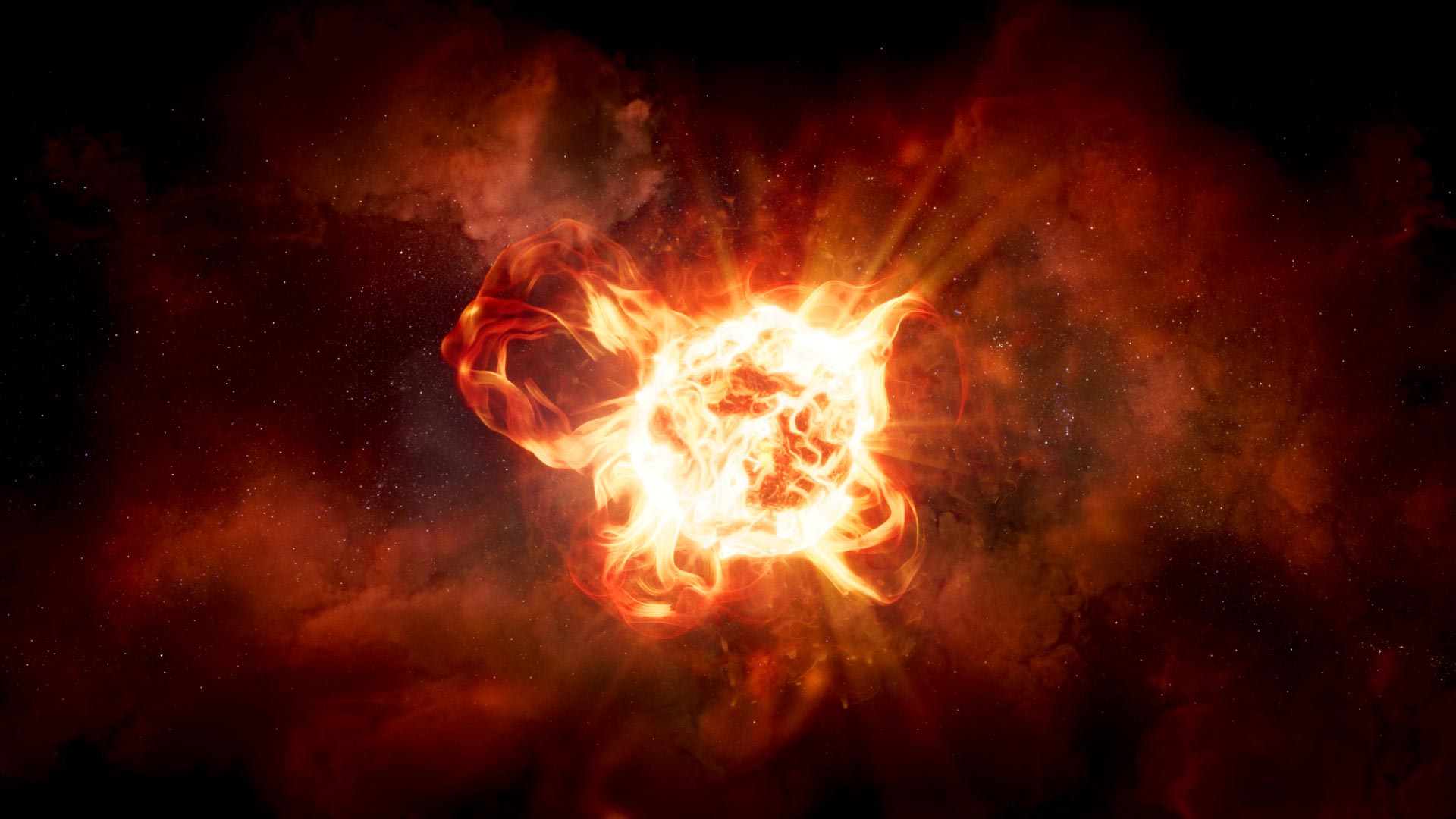
Located about 3,009 light-years from Earth, VY Canis Majoris is possibly the most massive star in the Milky Way.
By tracing molecular emissions in the outflows around the red hypergiant star VY Canis Majoris, astronomers have obtained the first detailed map of the star’s envelope, which sheds light on the mechanisms involved in the final stages of extreme supergiant star.The team, led by UArizona researchers Ambesh Singh and Lucy Ziurys, traced the distribution, directions, and velocities of a variety of molecules surrounding a red hypergiant star known as VY Canis Majoris.
Unlike stars with lower masses – which are more likely to puff up once they enter the red giant phase but generally retain a spherical shape – hypergiants tend to experience substantial, sporadic mass loss events that form complex, highly irregular structures composed of arcs, clumps, and knots.
Located about 3,009 light-years from Earth, VY Canis Majoris – or VY CMa, for short – is a pulsating variable star in the slightly southern constellation of Canis Major.Spanning anywhere from 10,000 to 15,000 astronomical units (with 1 AU being the average distance between Earth and the sun) VY CMa is possibly the most massive star in the Milky Way, according to Ziurys.
“We are particularly interested in what hypergiant stars do at end of their lives,” said Singh, a fourth-year doctoral student in Ziurys’ lab.“People used to think these massive stars simply evolve into supernovae explosions, but we are no longer sure about that.”.
To uncover more details of the processes by which hypergiant stars end their lives, the team set out to trace certain molecules around the hypergiant and map them to preexisting images of the dust, taken by the Hubble Space Telescope.
“Nobody has been able to make a complete image of this star,” Ziurys said, explaining that her team set out to understand the mechanisms by which the star sheds mass, which appear to be different from those of smaller stars entering their red giant phase at the end of their lives.“You don’t see this nice, symmetrical mass loss, but rather convection cells that blow through the star’s photosphere like giant bullets and eject mass in different directions,” Ziurys said.“Until now, only small portions of this enormous structure had been studied, but you can’t understand the mass loss and how these big stars die unless you look at the entire region
June 18, 2022